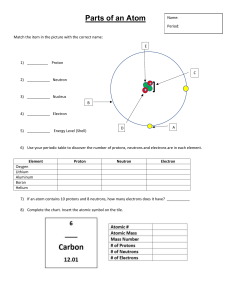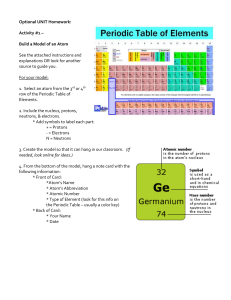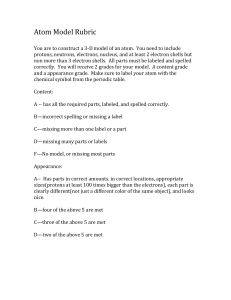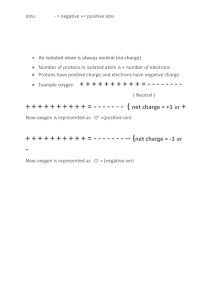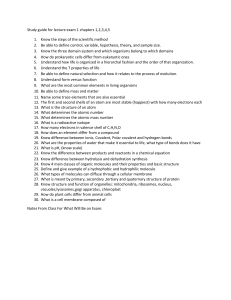Chapter 2 Exam Review
advertisement
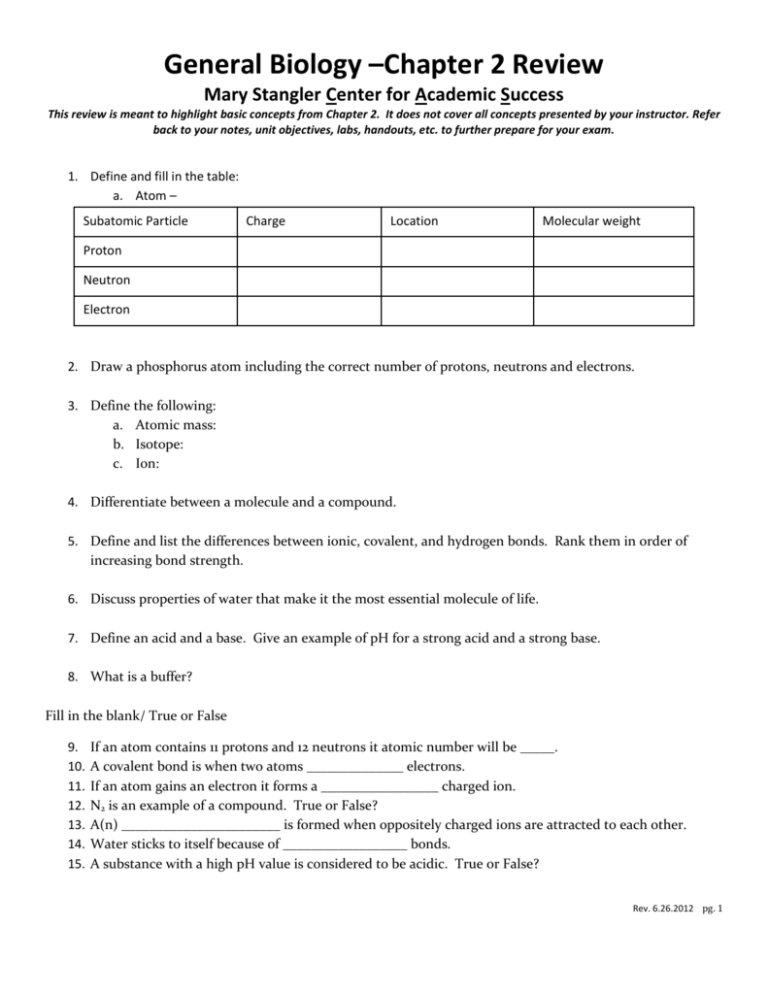
General Biology –Chapter 2 Review Mary Stangler Center for Academic Success This review is meant to highlight basic concepts from Chapter 2. It does not cover all concepts presented by your instructor. Refer back to your notes, unit objectives, labs, handouts, etc. to further prepare for your exam. 1. Define and fill in the table: a. Atom – Subatomic Particle Charge Location Molecular weight Proton Neutron Electron 2. Draw a phosphorus atom including the correct number of protons, neutrons and electrons. 3. Define the following: a. Atomic mass: b. Isotope: c. Ion: 4. Differentiate between a molecule and a compound. 5. Define and list the differences between ionic, covalent, and hydrogen bonds. Rank them in order of increasing bond strength. 6. Discuss properties of water that make it the most essential molecule of life. 7. Define an acid and a base. Give an example of pH for a strong acid and a strong base. 8. What is a buffer? Fill in the blank/ True or False 9. 10. 11. 12. 13. 14. 15. If an atom contains 11 protons and 12 neutrons it atomic number will be _____. A covalent bond is when two atoms ______________ electrons. If an atom gains an electron it forms a _________________ charged ion. N2 is an example of a compound. True or False? A(n) _______________________ is formed when oppositely charged ions are attracted to each other. Water sticks to itself because of __________________ bonds. A substance with a high pH value is considered to be acidic. True or False? Rev. 6.26.2012 pg. 1

